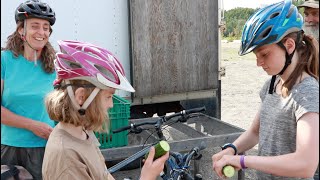Alaska Grown
 Food security is more important now than ever in Alaska. Alaska agriculture provides only 5% of the food we consume; the rest is flown, barged or driven in.
Food security is more important now than ever in Alaska. Alaska agriculture provides only 5% of the food we consume; the rest is flown, barged or driven in.
This documentary created by Alaska Center for Energy and Power’s chief storyteller, Amanda Byrd, explores some of the challenges Alaska farmers must overcome to produce food for their communities. These include wind, bison, moose, energy and water.
Only a fraction of the carrots that Alaska consumes are actually grown in the state, even though Alaska carrots have the highest sugar content due to the high latitude. Most carrots are imported from California. Peonies are Alaska’s largest agricultural export, and climate change is changing the risks associated with the flower crop. Only one U.S. Department of Agriculture-approved dairy remains in the state.
Growing more food in the state could ensure food is always on the shelves, especially during a natural disaster like an earthquake or a global pandemic like COVID-19.
The documentary was funded by AgriLogic Consulting and the USDA Risk Management Agency.
Contact Amanda Byrd at agbyrd@alaska.edu or visit the ACEP website at http://acep.uaf.edu/

Благодарим про интересное видео про Ваш прекрасный край. Мы в Украине тоже выживаем за счёт аграрного труда, но у Вас рай по сравнению с нами.
I’d like to see a lot more Alaskan farming. But, a couple questions, Amanda: does the "only 5% of food we consume" include wild fish and game we consume? It seems that one moose would be equivalent to many tons of carrots in nutritional units. What about sockeye salmon, harvested by the millions and mostly exported? What is the value assigned to sockeye salmon in Alaska’s food security?